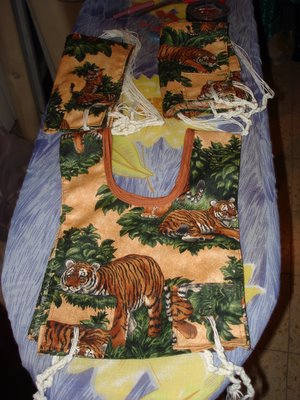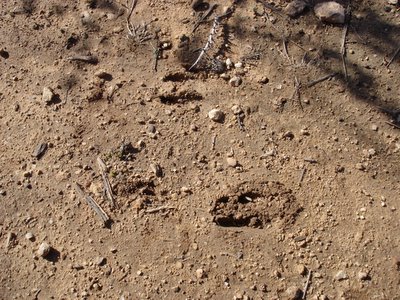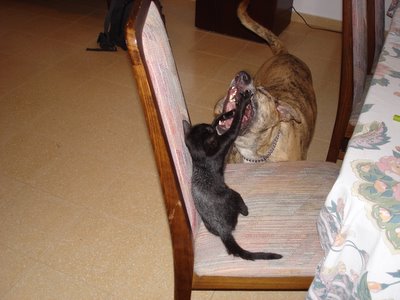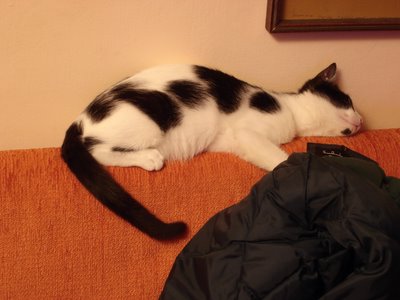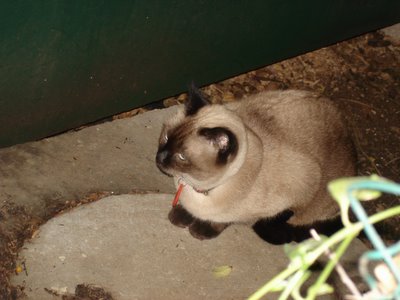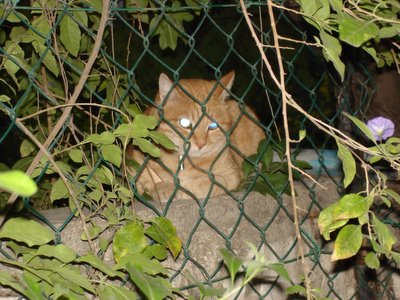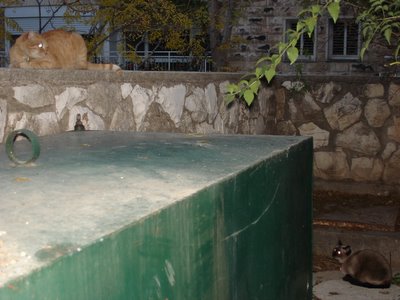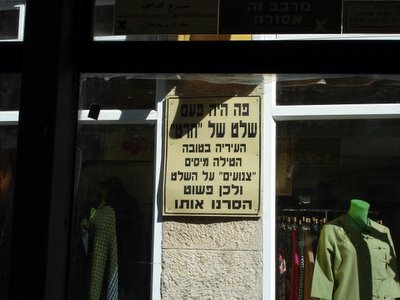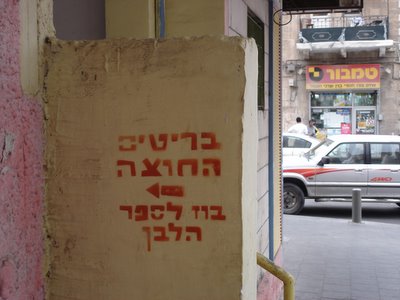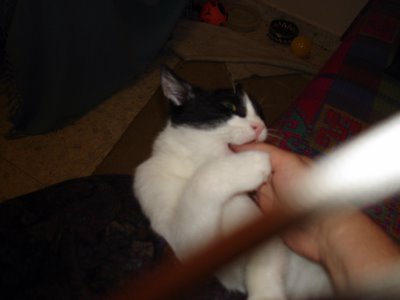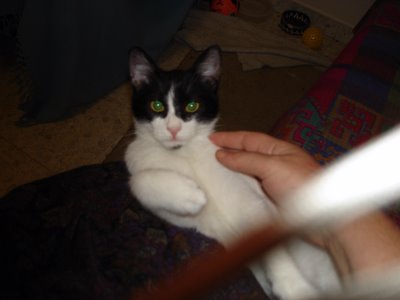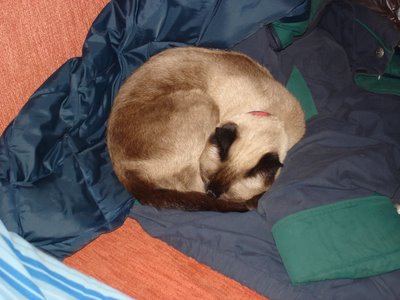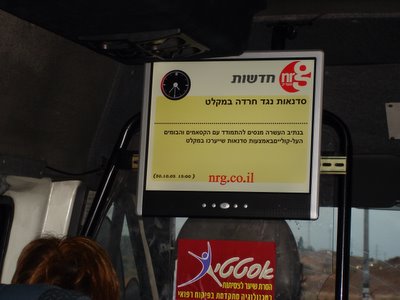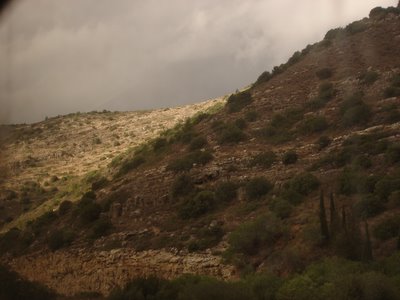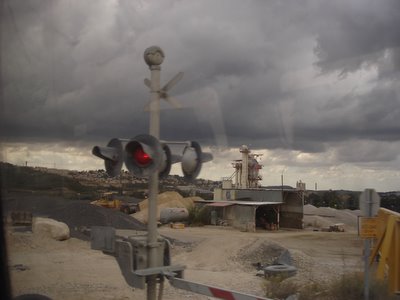In Memoriam: Larry (Arie) Gamliel, 1950–2003
(“Arie” is pronounced “Aryeh.”)
Today is the second anniversary of the death of one of my dearest friends, Larry Gamliel.
I first met Larry toward the end of 1996 at an English-language song contest sponsored by the Association of Americans and Canadians in Israel. He was providing musical accompaniment for one contestant; I was singing for another. We met in the green room at the music conservatory in Be’er Sheva and hit it off right away. Soon afterwards, we began performing together at local folk events, and even discovered that we had friends in common.
But Larry was much more to me than a music partner. He was my big brother and one of the wisest people I ever met. He was the one I called when I needed a reality check, or just to vent. And sometimes he called me to vent, too. But he didn’t do that too often. Larry loved people and had a wonderful, if slightly warped, sense of humor, and laughter followed him wherever he went.
His knowledge of pop music was nothing less than encyclopedic. Sometimes I would quote a line, or even half a line, from a song I had once heard on the radio, and it turned out that he knew the song from beginning to end as well as its composer, year of release, original performer and subsequent covers. He could recite entire comedy routines from start to finish with all the appropriate inflections, intonations and accents. He was a pillar of Israel’s folk-music community, organizing events and appearing in most of them, usually behind his keyboard but sometimes with guitar. And the audience loved him.
Larry was modest. His twin brother had been an ambassador during the Clinton administration, but he never mentioned it. I only found it out after his death.
Larry was a good friend. When my late teacher, Yonina, was housebound for several weeks with a broken ankle some years ago, he got a group of musicians together to visit her one evening and play the folk music she loved.
Larry felt deeply. For several years he held an annual memorial concert for his late older brother, during which he could get pretty serious. But he also quoted his brother’s irreverent jokes and retorts, sometimes using them to snap me out of an occasional too-serious attitude.
Larry saw more than most people I know. That was pretty remarkable, since he was, for all practical purposes, blind from birth. But then, he was a pretty special guy who did extraordinary things.
Like the time he took me to Haifa to ride the subway for the first time. We rode a bus and a train, went on foot through part of Haifa and took the Carmelit subway, and through it all his guiding would have done an Israeli tour guide proud. He knew every landmark and every street, and he even knew the model of the train on which we were riding.
(Yes. In Haifa. Did I mention that Larry lived in Jerusalem?)
And he gave directions, too. I could swear that the man had maps in his head. Sometimes, when we walked outside together, people would stop us to ask for directions (as Larry pointed out, they always asked me because I am sighted; they automatically did not believe that a blind person would know how to reach a destination independently). I remained silent and let Larry do the talking, and later on regaled him with descriptions of how far the questioners’ jaws had dropped when he gave them flawless directions.
He traveled abroad with family and friends with full confidence that he could find his way anywhere. And he did. Here he describes one of his adventures:
Don’t talk to me about moving sidewalks! Part of my Heathrow adventure which I mentioned in a previous post was to use the moving sidewalk which went through a long tunnel to the underground station. The moving sidewalk was supposed to be bi-directional, which is to say two moving lanes running parallel to each other. Except that I could only find one of them. So I went against my better instincts and got on it. It was, of course, going in the wrong direction. Let me tell you, I got off of it quite quickly. <grin> In fact I did a dance step that would have done Chubby Checker proud. Fortunately, the tunnel was totally deserted and there was no one around to witness my mortification. I then did what I should have done in the first place, explore until I found the sidewalk going in the correct direction. As a post script, when I actually got to the train, I scared the wits out of an otherwise nice policeman who was sure that if I went down the escalator by myself a nuclear war would ensue. I went down it anyway, being very grateful that he hadn’t been at the start of the slidewalk.
Larry was a Bible scholar who could quote whole sections of the Bible by heart and debate their meaning like a seasoned clergyman. I loved it when he quoted the first half of Proverbs 27:2 in Hebrew: “Let the mouth of another praise you, not yours,” together with a clever lesson for life, arrived at by changing one vowel: “Let the mouth of another praise you, and if not—then yours!” (It sounds much better in Hebrew.)
There were parts of Larry’s life that I never knew about until after he died. For example, he was deeply involved in the National Federation of the Blind and was a staunch champion of accessibility, and also of independence. He believed that blind people could do anything that sighted people could do (with very few exceptions, such as driving), and he set out to show that by personal example. He could go anywhere by himself, was adept at using computers and often helped his sighted friends, including myself, when we were plagued with computer glitches. (I always thought it was a bit uncanny how he knew exactly what was supposed to pop up on the screen at a given time during an installation. “Does your screen say this, or this?” he would ask, and then follow up with perfect instructions on what to do next.) At the time he died, he was learning SQL in preparation for finding a new job after his retirement. I also remember how he coached my friends on how to make their websites accessible to people like himself who use voice programs in order to read Internet sites because they cannot see the screen.
I could go on for terabytes about Larry and how rare and special he was. But I will end with a bit of his writing that I found in the archives of an NFB mailing list shortly after he died. He had written it slightly more than a month before his death. To me it encapsulates his unfailingly positive and optimistic attitude toward life.
I must confess that I have mixed feelings about the question of what I “miss,” even though I am for all practical purposes blind from birth. I think each of us would rather be able to do various things without the need to rely on alternative techniques. I’d love to play baseball. I’d love to use a computer the way everyone with sight does.
On the other hand, if I were monetarily more well off than I am, I could do lots of things I cannot do. If I were as handsome as [name deleted] I could have been a movie star. <smirk> There are many things which my being who and what I am limits me. What can I do about this? Shall I live my life forever bemoaning what I am not and can never be? Shall I curse my parents for bringing me into the world? My cousin is the mother of a child with cerebral palsy who is now an embittered adult. His mother once cried on my shoulder, relating how his favorite remonstration is that he would rather haven’t been born, but since she was responsible for his life she was responsible for his care and upkeep also.
I am blind, and there are things I will not be able to do as well as sighted people, perhaps not at all. But I will never, ever, adopt his approach. Never!!!
I miss Larry.
